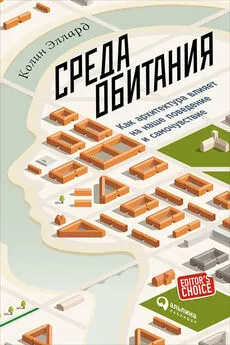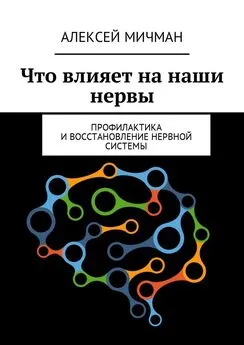Мэтью Джексон - Человеческие сети [Как социальное положение влияет на наши возможности, взгляды и поведение]
- Название:Человеческие сети [Как социальное положение влияет на наши возможности, взгляды и поведение]
- Автор:
- Жанр:
- Издательство:АСТ: CORPUS
- Год:2021
- Город:Москва
- ISBN:978-5-17-117364-7
- Рейтинг:
- Избранное:Добавить в избранное
-
Отзывы:
-
Ваша оценка:
Мэтью Джексон - Человеческие сети [Как социальное положение влияет на наши возможности, взгляды и поведение] краткое содержание
В формате PDF A4 сохранен издательский макет книги.
Человеческие сети [Как социальное положение влияет на наши возможности, взгляды и поведение] - читать онлайн бесплатно ознакомительный отрывок
Интервал:
Закладка:
Dasgupta P. Economics of Social Capital // Economic Record. 2005. Vol. 81. № s1. P. 1–21.
Dasgupta P., Serageldin I. Social Capital: A Multifaceted Perspective . World Bank Publications, 2001.
Davidow W. H. Overconnected: The Promise and Threat of the Internet . San Francisco: Open Road Media, 2011.
Davis J. H. Some Compelling Intuitions About Group Consensus Decisions, Theoretical and Empirical Research, and Interpersonal Aggregation Phenomena: Selected Examples 1950–1990 // Organizational Behavior and Human Decision Processes. 1992. Vol. 52. P. 3–38.
Davis N. T., Dunaway J. L. Party Polarization, Media Choice, and Mass Partisan-Ideological Sorting // Public Opinion Quarterly. 2016. Vol. 80. № s1. P. 272–297.
Dawkins R. The Selfish Gene . Oxford, U. K.: Oxford University Press, 1976.
Dean K. R., Krauer F., Walløe L., Lingjærde O. Ch., Bramanti B., Stenseth N., Schmid B. V. Human Ectoparasites and the Spread of Plague in Europe During the Second Pandemic // Proceedings of the National Academy of Sciences. 2018. Vol. 115. № 6. P. 1304–1309.
DeJong W., Schneider S. K., Towvim L. G., Murphy M. J., Doerr E. E., Simonsen N. R., Mason K. E., Scribner R. A. A Multisite Randomized Trial of Social Norms Marketing Campaigns to Reduce College Student Drinking // Journal of Studies on Alcohol. 2006. Vol. 67. P. 868–879.
DeMarzo P. M., Vayanos D., Zwiebel J. Persuasion Bias, Social Influence, and Unidimensional Opinions // The Quarterly Journal of Economics. 2003. Vol. 118. № 3. P. 909–968.
Demirer M., Diebold F. X., Liu L., Yilmaz K. Estimating Global Bank Network Connectedness // Journal of Applied Econometrics. 2018. Vol. 33. № 1. P. 1–15.
De Souza Briggs X., Popkin S. J., Goering J. Moving to Opportunity: The Story of an American Experiment to Fight Ghetto Poverty . Oxford, U. K.: Oxford University Press, 2010.
Dhillon A., Iversen V., Torsvik G. Employee Referral, Social Proximity,and Worker Discipline . Mimeo, University of Warwick, 2013.
Diamond J. Guns, Germs, and Steel . N. Y.: W. W. Norton, 1997.
Diestel R. Graph Theory // Graduate Texts in Mathematics (Book 173). Berlin and Heidelberg: Springer-Verlag, 2000.
Dodds P. S., Muhamad R., Watts D. J. An Experimental Study of Search in Global Social Networks // Science. 2003. Vol. 301. P. 827–829.
Doleac J. L., Hansen B. Does Ban the Box Help or Hurt Low-Skilled Workers? Statistical Discrimination and Employment Outcomes When Criminal Histories Are Hidden . (2016) National Bureau of Economic Research Working Paper № 22469.
Domingue B. W., Belsky D. W., Fletcher J. M., Conley D., Boardman J. D., Harris K. M. The Social Genome of Friends and Schoolmates in the National Longitudinal Study of Adolescent to Adult Health // Proceedings of the National Academy of Sciences. 2018. Vol. 115. № 4. P. 702–707.
Duan W., Gu B., Whinston A. B. Do Online Reviews Matter? — An Empirical Investigation of Panel Data // Decision Support Systems. 2008. Vol. 45. № 4. P. 1007–1016.
Dubois F., Muller Ch. Segregation and the Perception of the Minority . Mimeo, University of Aix-Marseille, 2016.
Duboscq J., Romano V., Sueur C., MacIntosh A. J. J. Network Centrality and Seasonality Interact to Predict Lice Load in a Social Primate // Scientific Reports. 2016. Vol. 6. Article № 22095.
Duflo E., Saez E. The Role of Information and Social Interactions in Retirement Plan Decisions: Evidence from a Randomized Experiment // The Quarterly Journal of Economics. 2003. Vol. 118. № 3. P. 815–842.
Dupont B. Bank Runs, Information and Contagion in the Panic of 1893 // Explorations in Economic History. 2007. Vol. 44. P. 411–431.
Durlauf S. N. A Theory of Persistent Income Inequality // Journal of Economic Growth. 1996. Vol. 1. P. 75–93.
Dutta B., Jackson M. O. The Stability and Efficiency of Directed Communication Networks // Review of Economic Design. 2000. Vol. 5. P. 251–272.
Dutta B., Mutuswami S. Stable Networks // Journal of Economic Theory. 1997. Vol. 76. P. 322–344.
Easley D., Kleinberg J. Networks, Crowds, and Markets: Reasoning About a Highly Connected World . Cambridge, U. K.: Cambridge University Press, 2010.
Easterly W. Empirics of Strategic Interdependence: The Case of the Racial Tipping Point // The B. E. Journal of Macroeconomics. 2009. Vol. 9. № 1. Article № 25.
Eberhardt J. L., Goff Ph. A., Purdie V. J., Davies P. G. Seeing Black: Race, Crime, and Visual Processing // Journal of Personality and Social Psychology. 2004. Vol. 87. P. 876.
Echenique F., Fryer R. G. (Jr.) A Measure of Segregation Based on Social Interactions // The Quarterly Journal of Economics. 2007. Vol. 122. № 2. P. 441–485.
Eckel C. C., Grossman Ph. J. Managing Diversity by Creating TeamIdentity // Journal of Economic Behavior & Organization. 2005. Vol. 58. P. 371–392.
Edling Ch., Rydgren J., Sandell R. Terrorism, Belief Formation, and Residential Integration: Population Dynamics in the Aftermath of the 2004 Madrid Terror Bombings // American Behavioral Scientist. 2016. Vol. 60. № 10. P. 1215–1231.
Elliott M., Golub B., Jackson M. O. Financial Networks and Contagion // The American Economic Review. 2014. Vol. 104. № 10. P. 3115–3153.
England P. Comparable Worth: Theories and Evidence . N. Y.: Routledge, 2017.
Enke B., Zimmermann F. Correlation Neglect in Belief Formation // Review of Economic Studies. 2017. Vol. 86. № 1. P. 313–332.
Eom Y.-H., Jo H.-H. Generalized Friendship Paradox in Complex Networks: The Case of Scientific Collaboration // Scientific Reports. 2014. Vol. 4. Article № 4603.
Epple D., Romano R. Peer Effects in Education: A Survey of the Theory and Evidence // The Handbook of Social Economics / Ed. J. Benhabib, A. Bisin, M. O. Jackson. Amsterdam: North-Holland, 2011. Vol. 1. P. 1053–1163.
Ercsey-Ravasz M., Lichtenwalter R. N., Chawla N. V., Toroczkai Z. Range-Limited Centrality Measures in Complex Networks // Physical Review E. 2012. Vol. 85. P. 066103.
Erdős P., Rényi A. On Random Graphs // Publicationes Mathematicae Debrecen. 1959. Vol. 6. P. 156.
Erdős P., Rényi A. On the Evolution of Random Graphs . Publ. Math. Inst. Hung. Acad. Sci, 1960. Vol. 5. P. 17–60.
Everett M. G., Borgatti S. P. The Centrality of Groups and Classes // The Journal of Mathematical Sociology. 1999. Vol. 23. P. 181–201.
Everett M. G., Borgatti S. P. Ego Network Betweenness // Social Networks. 2005. Vol. 27. P. 31–38.
Everett M. G., Valente Th. W. Bridging, Brokerage and Betweenness // Social Networks. 2016. Vol. 44. P. 202–208.
Fafchamps M., Gubert F. The Formation of Risk Sharing Networks // Journal of Development Economics. 2007. Vol. 83. P. 326–350.
Fafchamps M., Lund S. Risk-Sharing Networks in Rural Philippines // Journal of Development Economics. 2003. Vol. 71. P. 261–287.
Fafchamps M., Van der Leij M. J., Goyal S. Matching and Network Effects // Journal of the European Economic Association. 2010. Vol. 8. P. 203–231.
Farboodi M. Intermediation and Voluntary Exposure to Counterparty Risk . Mimeo, Princeton University, 2014.
Feigenberg B., Field E., Pande R. The Economic Returns to Social Interaction: Experimental Evidence from Microfinance // The Review of Economic Studies. 2013. Vol. 80. № 4. P. 1459–1483.
Feinberg M., Willer R., Schultz M. Gossip and Ostracism Promote Cooperation in Groups // Psychological Science. 2014. Vol. 25. № 3. P. 656–664.
Feld S. L. Why Your Friends Have More Friends than You Do // American Journal of Sociology. 1991. Vol. 96. № 6. P. 1464–1477.
Felfe Ch., Lalive R. Does Early Childcare Affect Children’s Development . Mimeo, University of Lausanne, 2018.
Ferguson N. M., Cummings D. A. T., Fraser Ch., Cajka J. C., Cooley Ph. C., Burke D. S. Strategies for Mitigating an Influenza Pandemic // Nature. 2006. Vol. 442. P. 448–452.
Ferguson N. The Square and the Tower: Networks, Hierarchies and the Struggle for Global Power . London: Penguin, 2018.
Fernandez M., Nichols L. Bridging and Bonding Capital: Pluralist Ethnic Relations in Silicon Valley // International Journal of Sociology and Social Policy. 2002. Vol. 22. P. 104–122.
Fernandez R. M., Castilla E. J., Moore P. Social Capital at Work: Networks and Employment at a Phone Center // American Journal of Sociology. 2000. P. 1288–1356.
Fichtner P. Dynastic Marriage in Sixteenth-Century Habsburg Diplomacy and Statecraft: An Interdisciplinary Approach // The American Historical Review. 1976. Vol. 81. P. 243–265.
Field E., Pande R. Repayment Frequency and Default in Microfinance: Evidence from India // Journal of the European Economic Association. 2008. Vol. 6. P. 501–509.
Fiorina M. P. The Political Parties Have Sorted . Hoover Institution Essay on Contemporary Politics, 2017. Series № 3.
Fisher L. The Perfect Swarm: The Science of Complexity in Everyday Life . N. Y.: Basic Books, 2009.
Fisman R., Miguel E. Corruption, Norms, and Legal Enforcement: Evidence from Diplomatic Parking Tickets // Journal of Political Economy. 2007. Vol. 115. P. 1020–1048.
Fisman R., Shi J., Wang Y., Xu R. Social Ties and Favoritism in Chinese Science // Journal of Political Economy. 2018. Vol. 126. №. 3. P. 1134–1171.
Fleurbaey M., Maniquet F. A Theory of Fairness and Social Welfare . Cambridge, U. K.: Cambridge University Press, 2011.
Fortunato S. Community Detection in Graphs // Physics Reports. 2010. Vol. 486. № 3–5. P. 75–174.
Foster A. D., Rosenzweig M. R. Learning by Doing and Learning from Others: Human Capital and Technical Change in Agriculture // Journal of Political Economy. 1995. Vol. 103. P. 1176–1209.
Fowler J. H., Dawes Ch. T., Christakis N. A. Model of Genetic Variation in Human Social Networks // Proceedings of the National Academy of Sciences . 2009. Vol. 106. P. 1720–1724.
Fradkin A., Grewal E., Holtz D., Pearson M. Bias and Reciprocity in Online Reviews: Evidence from Field Experiments on Airbnb // Proceedings of the Sixteenth ACM Conference on Economics and Computation, 2015. P. 641–641.
Frederick S. Overestimating Others’ Willingness to Pay // Journal of Consumer Research. 2012. Vol. 39. № 1. P. 1–21.
Freeman L. C. A Set of Measures of Centrality Based on Betweenness // Sociometry. 1977. Vol. 40. № 1. P. 35–41.
Freeman, L. C. Centrality in Social Networks Conceptual Clarification // Social Networks. 1978. Vol. 1. P. 215–239.
French J. R. A Formal Theory of Social Power // Psychological Review. 1956. Vol. 63. № 3. P. 181–194.
Fricke D., Lux Th. Core Periphery Structure in the Overnight Money Market: Evidence from the e-MID Trading Platform // Computational Economics. 2014. Vol. 45. № 3. P. 359–395.
Friedman Th. L. Thank You for Being Late: An Optimist’s Guide to Thriving in the Age of Accelerations . N. Y.: Farrar, Straus & Giroux, 2016.
Froot K. A., Scharfstein D. S., Stein J. C. Herd on the Street: Informational Inefficiencies in a Market with Short-Term Speculation // The Journal of Finance. 1992. Vol. 47. P. 1461–1484.
Читать дальшеИнтервал:
Закладка:
![Обложка книги Мэтью Джексон - Человеческие сети [Как социальное положение влияет на наши возможности, взгляды и поведение]](/books/1061636/metyu-dzhekson-chelovecheskie-seti-kak-socialnoe-po.webp)









